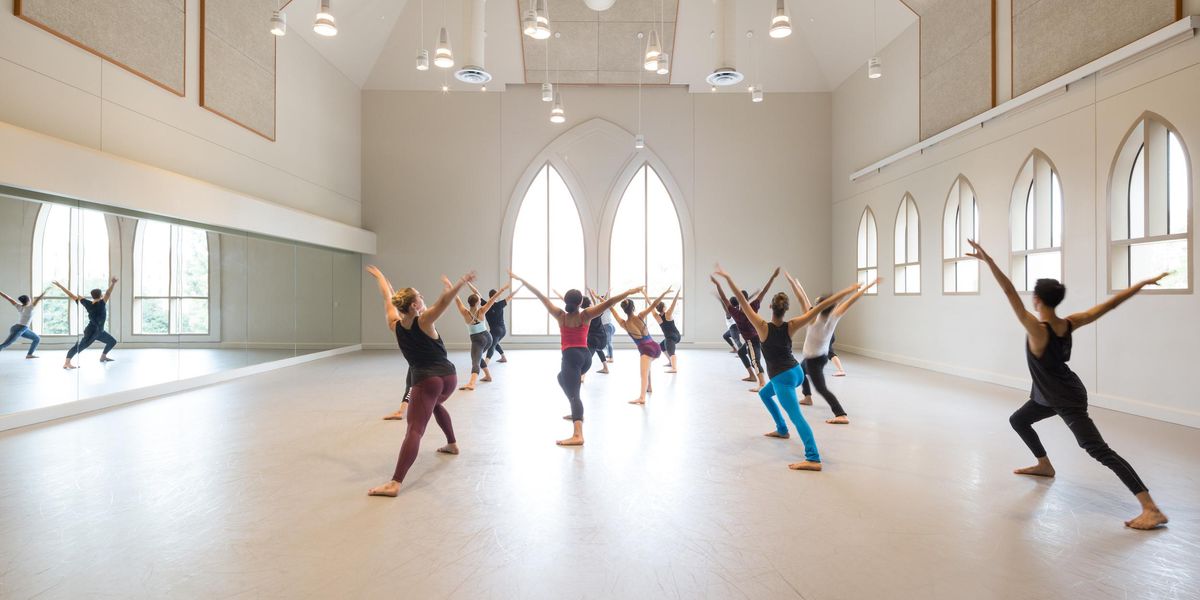Miguel Gutierrez and the Powerful People
Walker Art Center
McGuire Theater
Minneapolis, MN
September 19–21, 2012
Performance reviewed: Sept. 19
Seated on two sides of the stage of the Walker Art Center’s McGuire Theater, the audience gets an up close and personal experience of Miguel Gutierrez’s And lose the name of the action. But this rambunctious and frequently evocative meld of improvisation, highly stylized movement and text, and ideas drawn from 19th-century spiritualism and philosophical conundrums often seems bloated and rambling.
Gutierrez and his excellent collaborators (Michelle Boulé, Hilary Clark, Luke George, K.J. Holmes, and Ishmael Houston-Jones) animate loosely strung scenes ranging from sardonic consciousness-raising sessions to Dionysian frenzies. The performers and actor Paul Duncan (who is projected on suspended screens) deliver the convoluted text, written by Boru O’Brien O’Connell, with sweet songs by Gutierrez.
Early on, the dancers sit in the audience as Houston-Jones plays the line between jovial emcee and sinister charismatic leader. He asks the audience to hold hands and take several “cleansing breaths” together. The other performers mirror his obsessive hand gestures. Finally, a white parachute suspended above the white stage lights up, and there is loud noise on the soundtrack designed by Neal Medlyn. Nirvana? Legerdemain?
Most of the evening is laced with this kind of ambiguity. We laugh at Houston-Jones’ New Age clichés and guru-ish behavior, but the mood shifts when the others join him in what becomes a kind of trance dance, each performer locked in his/her own world of ecstasy or anguish, worlds which occasionally overlap. The movement weaves and stutters, lurches out of control. It feels as if each dancer is improvising highly individual interpretations of a score with directives like “shift directions, show disorientation.”
Left to right: Miguel Gutierrez, Hilary Clark, and Michelle Boulé in rehearsal for
And lose the name of action. All photos by Ian Douglas, courtesy Walker Art Center.
Other scenes emphasize obsessive control: In one the performers give stylized readings from a pretentious script (“ideas are impressions on the brain”) while moving chairs around. Body- and brain-twisters (not to mention chair-shifting) reminiscent of David Gordon abound as the conversation degenerates into a ribald free-for-all.
The witty costumes by David Tabbert, mostly in white and beige, suggest an eclectic mix of periods and cultures. Each performer develops complexity as the dance progresses—Clark’s freewheeling ferocity reminiscent of Janis Joplin at one end of the spectrum, Holmes’ alert serenity at the other. But often And lose is like a stylistic Tower of Babble where formalism and expressionism uneasily coexist. The low-key, pedestrian movement of Judson and contact improvisation often feels at odds with the more adrenaline-infused intensity. At one point the text refers to an “empty white space” where “they discuss…themes and ideas…all gibberish.”
Well, not all gibberish. There are potent and evocative images here: George nuzzling Holmes’ belly with his head, then pulling a white cloth umbilical chord from her in his teeth. Or the group lying in a rigid head-to-feet line that begins to shift like an undulating tide. The formation fragments into harmonious parts of mathematical beauty and psychological complexity as Houston-Jones lies naked, one hand over his eyes, one reaching up to Holmes. She stands calmly over him, perhaps grieving, perhaps contemplating what exactly he needs from her.
Pictured at top: Michelle Boulé, KJ Holmes, Hilary Clark, Ishmael Houston-Jones, and Miguel Gutierrez in rehearsal for
And lose the name of action.




